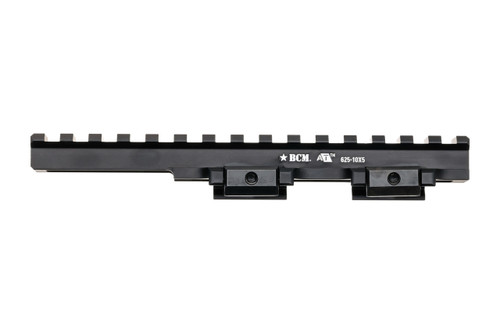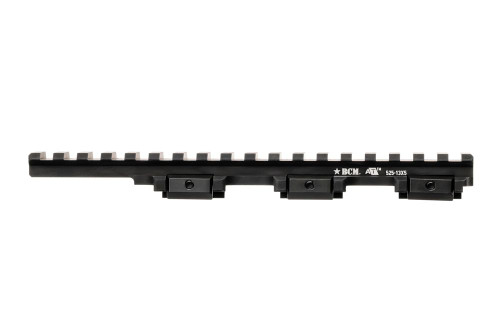A/T Optic Riser 525-10x5 is approximately 6-1/8” long and offers a cantilever section for applications where the end user desires to run an attachment or optic over the handguard while avoiding ‘bridging’ the optic from the upper to the handguard. This riser has 10 recoil slots on the main body, and 5 on the cantilever section for a total of 15 slots (16 lugs).
BCM® A/T™ Riser
Ideal for layering magnifiers and other enhancement systems with red dot optics, BCM A/T Risers offer the potential for a more capable platform that can improve threat identification in complex settings.
BORNE FROM EXPERIENCE
Optimized for close combat ranges, the BCM A/T Riser creates a platform that raises the centerline of attached optics and magnifiers by 0.525 inches which raises typical lower 1/3 optics to approximately 2.16 inches height and absolute co-witness optics to approximately 1.93 inches height. This additional height enhances the trained end user’s situational awareness, and further, makes it possible for them to take better aimed shots if they are using the optic in conjunction with night vision or other PPE systems.
Interfacing with the upper receiver using the same low-profile A/T system used in our Optic Mounts, not only reduces snag hazards but makes the entire length of rail usable for either bolt-on or QD attachments. Further, the low profile A/T interface enables mounting accessories with Mil-Std 1913 attachments anywhere on the stalk of the riser platform allowing end users to fine tune placement of optics, magnifiers, and other accessories.
Each A/T Riser is machined from aircraft aluminum alloy, hard coat anodized per Mil-A-8625F. The steel alloy clamp is hardened with Nitride coating for maximum strength. Finally, each Riser features multiple integral recoil lugs to mitigate recoil and counter recoil to preserve your zero and ensure “no fail” shots are placed where intended by the trained rifleman.
THE ANGLED TORQUE™ LOCK-UP
A/T (Angled Torque) mounts employ angled torque through a patented* clamp which applies triangulating force to create a stronger and more reliable lock up of the mount onto the end user’s rail.

All in, the A/T Mount delivers approximately twice the clamping force, at the same torque, versus a legacy horizontal interface.
* US Patent D973.826, and other patents pending
























